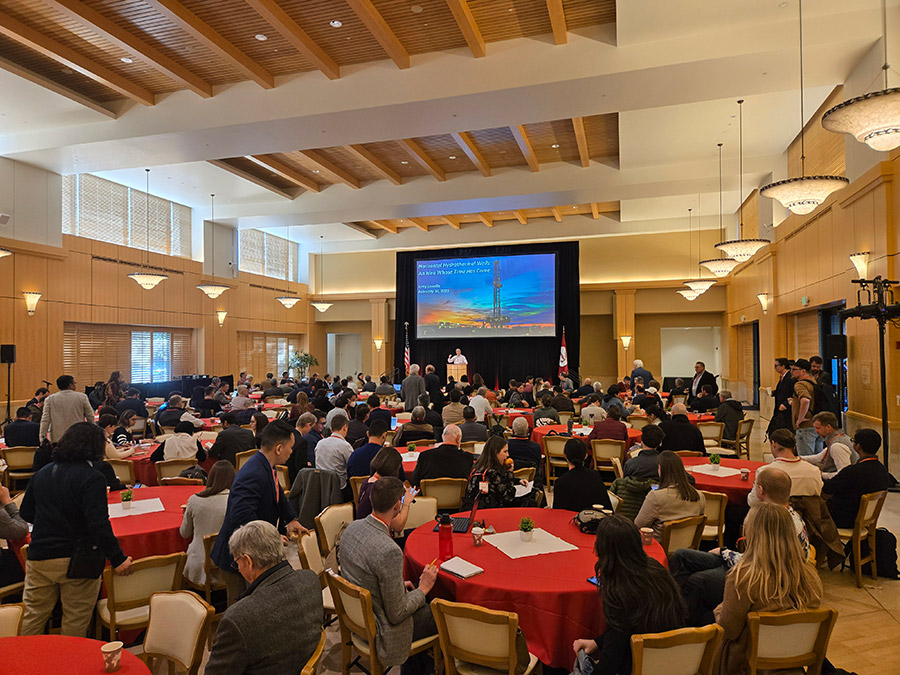Renewable Energy
Industry Anticipates Geothermal Energy Growth Burst in the US

Advanced geothermal baseload power and energy storage system test well in Starr County, Texas, is set to operate this year to test power generation resilience for the U.S. Air Force.
Photo courtesy Sage Geosystems
Hoping to take a cue from the nation of Iceland, which powers most of its electrical grid with geothermal energy, proponents say they expect a U.S. rampup as projects receive closer attention from the fossil-fuel sector, investors and the government. Only 3 GW of geothermal has come online in the U.S. so far, with high upfront costs and uncertainty if Biden-era tax incentives will continue seen as hurdles.
Addressing a recent panel hosted by non-partisan think tank the Atlantic Council, Colorado Gov. Jared Polis (D) said his state sees geothermal as key to meeting its goal for 80% renewable energy by 2030, and has revamped its energy permitting agency to fast-track development projects.
Noting Colorado’s geothermal specific tax credit, Polis voiced support for a similar federal credit to be approved by Congress, which is also being advocated by the Western Governors Association in a new report.
While production and investment tax credit rules were finalized under President Joe Biden in mid-January, President Donald Trump may not execute them and Congress can still overturn them under the Congressional Review Act.
"To provide market certainty and encourage continued investment, Congress must prioritize protecting existing tax incentives which already support geothermal technology deployment," said Heather Reams, president of Citizens for Responsible Energy Solutions, in a March 3 opinion.
Cost Cutting
Technology adapted from oil and gas drilling has been used to cut costs and boost efficiencies in enhanced geothermal system development, said Stanford University earth sciences professor Roland Horne, a leading U.S. expert. It involves injecting fluid into rock formations to enhance permeability, allowing heat to be extracted and generate steam power. “It’s not wholesale plug and play, a lot of adaptation needs to be done,” he said, citing the extreme temperatures found in geothermal drilling that are never encountered in oil exploration.

Geothermal workshop, held at Stanford University for 50 years, boosted its attendance last year, with more sector buy-in from oil and gas companies.
Photo credit: Stanford Geothermal Program, Stanford University
Horne said drilling wells involves “major upfront capital costs under considerable geological uncertainty,” but adapted innovations of oil sector hydraulic fracturing and horizontal drilling methods could make systems “economically competitive over much of the U.S.”
In a recent 3,000-word analysis, Horne and other academic and industry experts detail how innovations in high-temperature drilling, well integrity and subsurface modeling are lowering costs and expanding geothermal’s reach beyond traditional western hotspots. With such improvements, they said, enhanced geothermal could achieve plant capital costs of $4,500 per kW and a levelized cost of electricity of $80 per MW-hour—competitive with market electricity prices—by 2027.
They cite projects in Europe and the U.S., including commercial-scale operations that have demonstrated long-term reliability.
The market prospects generated record turnout last month at Horne’s industry “workshop” event at the Stanford campus, ongoing since the 1970s, with lower costs luring more energy firms and others as investors. Oilfield services firm Baker Hughes is an investor in geothermal startup GreenFire Energy and is exploring ways to repurpose nonperforming oil wells as closed loop geothermal systems.
'Energy Dominance'
Tim Latimer, CEO of geothermal developer Fervo Energy, said at the Atlantic Council event that the market could reach 300 GW by 2050. He claimed “50% cost reduction this year,” on company projects, noting one demonstration project in Nevada begun in 2023 for Google that now powers its data centers. Fervo also plans to build its first utility-scale plant in Utah, with Southern California Edison set to take the offtake.
Also a key geothermal investor with an estimated $10-million stake in Fervo is oil and gas developer Liberty Energy, of which U.S. Energy Secretary Chris Wright is founder and former chairman-CEO, with severed financial ties, he claims. Geothermal technology gained funding support under the 2022 Inflation Reduction Act, and also is among sources on the Trump administration “energy dominance” priority list.
“A mature geothermal industry could “better energize our country … enable AI, manufacturing and reshoring, and stop the rise of our electricity prices,” Wright told the Making America Geothermal: Modern Advances conference in Washington, D.C., on March 4, what The Hill described as a “Republican-facing event.” He said he would “make it easier to get regulatory approvals ... do innovations ... and take that next step.” The U.S. Energy Dept. also recently launched GeoBridge, an online geothermal information clearinghouse, but Wright did not update any new Trump administration stand on project funding or incentives, or status of Congressional action.
Latimer advocated need for “continuity around tax credits and streamlining permitting so we can shorten our project construction timelines to help with investment return," he said “We need to take it to the bank, to get capital off the sidelines.”
Brian George, Google’s global energy market policy development leader and another Atlantic Council panelist, noted geothermal’s potential for “24/7 power to meet 24/7 demand” as the catalyst for the firm's “financial skin in the game.” He described “a ton of capital ready to go,” but said it also awaits federal, state and local government action on transmission expansion to insure energy security. “If we cant connect the load to the grid, it doesn’t matter,” George said. “We need to turn attention to make transmission a bipartisan issue … for the good for the country.”
Ravi I. Chaudhary, former U.S. Air Force assistant secretary for energy, installations and environment, stressed energy security urgency to the Atlantic Council audience. “We’ve got to bring up our game in innovation over the next decade; otherwise our adversaries … and global competitors will,” he said.
He pointed to pilot projects at Air Force sites in Texas and Idaho, begun in the previous administration, which will determine if geothermal systems could disconnect from the grid and still maintain base operations in case of a power disturbance or other emergency. “Geothermal is a natural methodology by which we can build redundancy and ruggedize our installations against potential threats,” he said. The U.S. Defense Dept. has included 11 geothermal energy developers among those to be on a technology acceleration program list.
Underlying the U.S. geothermal expansion is workforce development. Latimer emphasized adaptable skills from decades of oil and gas drilling, claiming the need for limited retraining of sector veterans “is a unique US competitive advantage.”
But Morgan D. Bazilian. professor of public policy at the Colorado School of Mines, cautioned that competition is keen for next-generation experts for work in AI and quantum computing, noting that 100% of its students get multiple job offers. “If we don’t find ways to make [geothermal] exciting … we will fail to train the workforce of the future we need,” he said.




